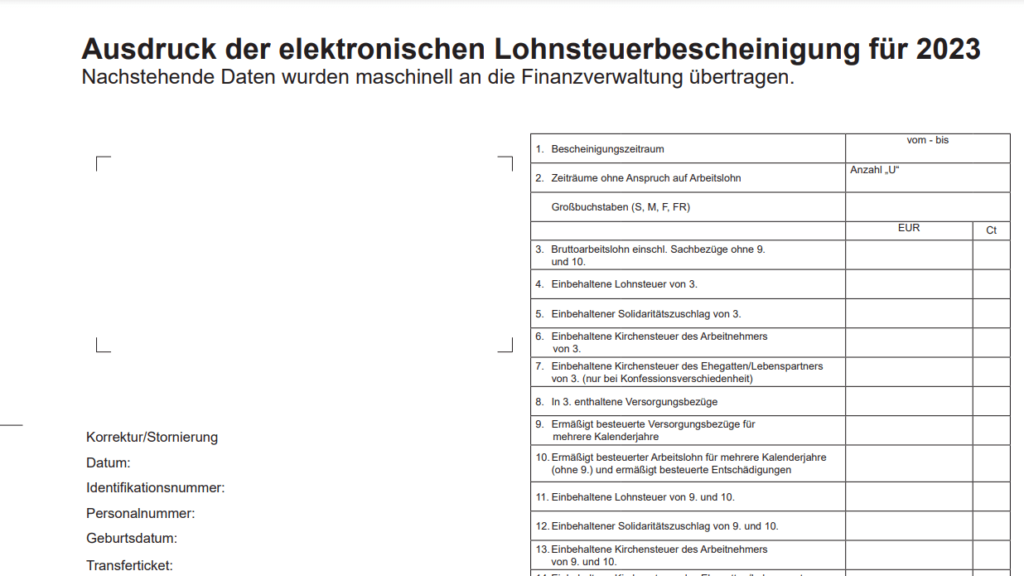
The German tax system is complicated for everyone including the citizens of Germany, long-term residents, and expats. The basics of tax system in Germany is the tax class (Steuerklasse) which is differentiated into six different categories. It is important to understand what means to be in any of these six different tax classes (Steuerklasse) and how it would help you in optimally managing one’s taxes.
Tax Class 1 (Steuerklasse 1)
This is primarily for individuals who are single, divorced, or married but permanently separated from their spouses. This class also includes those whose spouses live abroad or are subject to limited income tax liability in Germany. It’s structured to tax individuals who do not benefit from the splitting advantages of joint tax filings. For those earning up to €538 per month, there are no tax deductions; beyond this amount, the tax rate starts at approximately 14% and adjusts progressively according to the salary.
The tax rates are progressive, which means they increase with higher income. Despite the lack of splitting benefits, this class still provides the essential individual tax allowances that apply to all taxpayers. These rules ensure that those without dependents or a spouse are taxed fairly, while also taking into account their potentially lower financial obligations compared to those supporting a family.
Tax Class 2 (Steuerklasse 3)
This is designed for single parents who are entitled to claim child benefits or allowances for at least one minor child living in the household. It is important that no other adult in the household could qualify as a legal guardian for the child. This class provides a tax relief for single parents, acknowledging the additional financial responsibilities they carry. The relief comes through a tax allowance, which effectively increases the amount of income that is not subject to tax, thus reducing the overall tax burden for single parents.
The eligibility for this class hinges on not having another adult living in the household who could be a guardian. Single parents who qualify for this class benefit from the tax relief afforded by Section 24b of the Income Tax Act, which is designed to alleviate the financial load of single parenthood. This makes it a crucial support structure within the German tax system for single-parent families, enabling them to retain more of their income to cater to their household needs.
Tax Class 3 (Steuerklasse 3)
This is primarily for married couples or those in a registered civil partnership, particularly where one partner earns significantly more than the other. It’s beneficial for the higher-earning spouse to be classified under this class, as it offers a lower tax rate compared to others. This class also applies to widowed individuals for the year of their partner’s death and the subsequent year. It is an advantageous class for families with unequal incomes, as it results in a lower combined tax liability.
For couples where one spouse earns less or does not work, the lower earner or non-working spouse would be categorized under Tax Class 5. This division allows for a more equitable tax distribution based on the couple’s total income. Couples can change their tax class (Steuerklasse) multiple times a year if their circumstances change, ensuring that they can always benefit from the most favorable tax treatment available to them.
Tax Class 4 (Steuerklasse 4)
This is suitable for married couples with similar income levels. It ensures that both spouses are taxed individually while still benefitting from the combined allowances for married couples. This class assumes that both partners have unlimited tax liability and neither is living permanently separated from the other. It is the default class for married employees and provides a balance between the individual taxation system and the benefits of being married, without the need for one spouse to subsidize the tax rate of the other.
In practice, this class allows married couples to be taxed as individuals without losing the tax benefits associated with marriage. This class is ideal for couples who maintain similar income levels, as it does not disproportionately benefit one spouse over the other. By ensuring that both partners are taxed on an individual basis, it also simplifies tax filing and makes it easier for each spouse to understand their tax obligations.
Tax Class 5 (Steuerklasse 5)
This is the counterpart to Tax Class 3 and is selected by the lower-earning or non-working spouse of a married couple. It is designed to balance out the tax advantages received by the higher-earning spouse in Tax Class 3. However, by choosing this class, individuals give up claims to certain allowances such as the basic allowance or child allowance, which can result in a higher tax rate on their income. Nevertheless, other deductions such as the pension flat rate, the employee flat rate, and the special expenses flat rate still apply.
This class is part of a tax-splitting system for married couples, allowing them to optimize their combined tax burden. The decision to choose this Class should be carefully considered, as it typically leads to a higher tax deduction from the lower earner’s income. It is most beneficial when there is a substantial disparity in the couple’s incomes, making the overall tax savings for the household greater than what would be achieved if both spouses were taxed separately.
Tax Class 6 (Steuerklasse 6)
This applies to individuals who have multiple employers and is used for secondary employment. This class is characterized by the highest tax rates, as it does not allow for any tax-free allowances or benefits. If an employee has a primary job in one of the other tax classes, any additional job or side income would be taxed under Tax Class 6. This ensures that the correct amount of tax is paid on all sources of income, especially when the combined income from multiple jobs could push an individual into a higher tax bracket.
This Class 6 is the catch-all category for additional employment income, ensuring that taxpayers pay an appropriate amount of tax on their total income. It is important for taxpayers with multiple jobs to understand that their secondary incomes will be taxed without the benefit of allowances, which can result in a significant tax liability. It is also crucial for individuals in this tax class to keep accurate records of their income from all sources to ensure compliance with tax laws and regulations.
Conclusion
Tax Class 1 supports individuals with no dependents, establishing a foundation for single and divorced employees, as well as those with partners abroad. Tax Class 2 offers additional relief for single parents, acknowledging their dual role. Tax Classes 3 to 5 cater to married couples, allowing them to distribute their tax burden according to their income levels, while Tax Class 6 addresses the complexities of multiple income sources. A german version of the above information from an external source can be found here.
In summing up Germany’s tax class system, we see a detailed and a well structured framework that recognizes the varying financial and personal situations of its citizens and residents. Each class is a cog in the well-oiled machine of Germany’s tax system, ensuring everyone pays their fair share according to their individual life situations. This comprehensive system exemplifies Germany’s commitment to tax fairness and fiscal responsibility. Learn more about how to change tax classes here.


